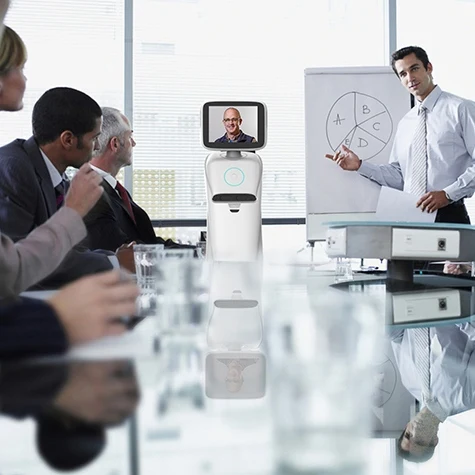Exploring the Fascinating World of Telepresence Robots

In an era of increasing globalization and remote work, the need for effective communication across distances has become paramount. Video conferencing is a useful tool, but lacks the physical presence of a person. Enter telepresence robots, an innovative solution that allows users to remotely interact with their surroundings in real time. These robots, which can navigate in physical space, are revolutionizing remote collaborative work, healthcare and education. In this article, we will explore the concept of telepresence robots and delve into their applications and benefits.
Telepresence robots have come a long way since their inception. These robots, originally developed for videoconferencing, were very limited in terms of mobility and functionality. Telepresence robots have evolved due to advancements in robotics and artificial intelligence. Modern versions boast enhanced capabilities such as autonomous navigation, live video streaming, and two-way communication, allowing users to navigate environments, interact with objects, and engage in real-time conversations with their surroundings.
Telepresence robots are used in many industries. In healthcare, these robots enable doctors to conduct remote consultations and provide medical expertise to patients in remote areas. These robots can be used to perform check-ups on patients, monitor their condition, or even assist in surgical procedures. Telepresence robots are also used in education to facilitate remote learning. This allows students who cannot attend classes physically to participate virtually. They are a great tool for inclusive education and ensure that everyone has access to high-quality education, no matter where they live.

Telepresence robots are also making a significant impact in the healthcare sector. These robots allow remote doctors to offer care and consultations in situations where medical professionals are not physically present. For example, during pandemics or rural areas, they can be used by doctors who cannot be physically there. Equipped with high-definition cameras and specialized medical instruments, office robot allow physicians to examine patients, discuss symptoms, and provide expert advice. This technology increases access to healthcare, particularly for underserved populations, and improves overall quality of care.
Telepresence robots have revolutionized education. These robots enable students who are unable to attend physical classrooms to participate in lessons and interact with their peers and teachers remotely. By integrating telepresence robots into classrooms, educational institutions can extend their reach to students in remote locations, ensuring inclusivity and equal opportunities for all. Additionally, telepresence robots can facilitate virtual field trips, allowing students to explore museums, historical sites, and even outer space, providing immersive learning experiences that transcend traditional boundaries.
Beyond the workplace, telepresence robots are finding their way into various other domains. They are used in museums to allow visitors to view exhibits remotely while receiving guided tours by experts. They are also utilized in the hospitality industry, enabling virtual hotel tours and providing personalized assistance to guests. Telepresence robots are also used to maintain social connections and facilitate family gatherings during periods of travel restrictions.
+ There are no comments
Add yours